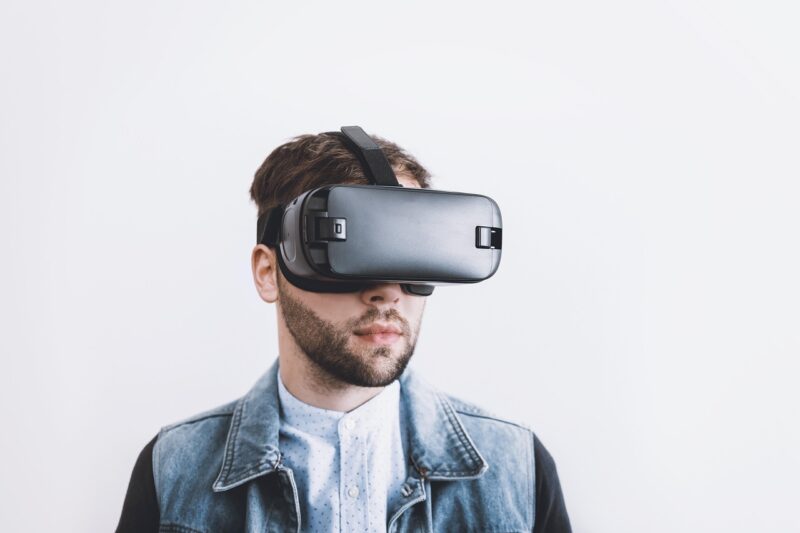
Virtual Reality (VR) and Augmented Reality (AR) have evolved tremendously over the past few years, significantly changing the way we interact with digital content and the physical world. As technology advances and consumer interest grows, the potential uses and benefits of VR and AR seem limitless. From gaming and entertainment to training and education, these immersive technologies are poised to revolutionize a multitude of industries. In this article, we will delve into the future of VR and AR, exploring emerging trends, anticipated advancements, and the endless possibilities these technologies offer.
1. Understanding Virtual Reality and Augmented Reality
Before diving into the future, it is essential to clarify what VR and AR actually are. While both involve digital interactions, they function quite differently:
– Virtual Reality (VR) creates a fully immersive experience that replaces the real world entirely. Users typically wear VR headsets that transport them to different environments, allowing them to interact with 3D digital elements as if they exist in the real world.
– Augmented Reality (AR) overlays digital information onto the real world, enhancing the user’s perception of their environment. This is commonly experienced through smartphones, tablets, or AR glasses, where virtual objects are superimposed onto physical surroundings.
This fundamental understanding sets the stage for the possibilities on the horizon.
2. Trends Shaping the Future of VR and AR
Several trends are currently shaping the evolution of VR and AR technologies, which will likely see substantial impact in the years to come:
– Increased Integration in Daily Life: With the rise of smart devices, integrating VR and AR into everyday activities will become common. From shopping experiences that allow users to virtually try on clothes to home design tools where users can visualize furniture in their space, these technologies will enhance consumer experiences.
– Advancements in Hardware: The future will see significant improvements in the hardware responsible for VR and AR experiences. Lightweight headsets with higher resolutions, enhanced audio, and better haptic feedback will emerge, providing users with more realistic experiences.
– Cross-Platform Experiences: As VR and AR continue to develop, cross-platform compatibility will become essential. Users will expect to interact seamlessly across different devices, be it consoles, mobile devices, or PCs, ensuring that VR and AR experiences are accessible anywhere.
– AI-Powered Functions: Artificial Intelligence (AI) is expected to play a pivotal role in the future of VR and AR. AI can enhance the interactivity and responsiveness of virtual environments, making them more reactive based on user behavior, preferences, and interactions.
– Expansion Beyond Gaming: While gaming has been a significant driving force for VR and AR, industries such as healthcare, education, and real estate are now exploring their potential. Training simulations for medical professionals, virtual classrooms, and property tours using AR are just a few examples.
3. The Role of VR and AR in Various Industries
The applications of VR and AR span multiple sectors, showcasing their versatility and potential impact. Here are a few key areas where we can expect significant developments:
– Healthcare: VR is revolutionizing medical training and patient care. Surgeons can rehearse complex procedures in a virtual environment, while patients can use VR for pain management and rehabilitation. AR can assist in surgeries by overlaying critical information directly onto the field of view, enhancing precision.
– Education: The traditional educational landscape is transforming with immersive learning experiences. Students can explore historical sites, conduct chemistry experiments, or attend classes in virtual environments, promoting engagement and retention through experiential learning.
– Retail and E-Commerce: The e-commerce industry is harnessing AR technology to improve the customer journey. Users can see how products will look in their home or on themselves, leading to more informed purchasing decisions and increased customer satisfaction.
– Training and Development: Businesses are adopting VR and AR for employee training, creating safe environments for practice and skill development. From safety protocols in manufacturing to customer service training, these technologies provide controlled settings for real-world practice.
– Entertainment and Media: The entertainment industry is no stranger to VR and AR. Aside from immersive gaming, there are opportunities for AR-enhanced films that allow viewers to engage with content directly. Interactive storytelling could evolve further, providing unique experiences for each viewer.
4. The Challenges Ahead
Despite the bright future of VR and AR, several challenges must be overcome:
– Accessibility and Affordability: As with any emerging technology, there is often a gap in accessibility. High-quality VR headsets can be expensive, limiting who can participate in these immersive experiences.
– Content Development: As industries adopt VR and AR, the demand for high-quality content will grow. Developing rich and diverse content requires creativity, technical skill, and investment, which can be challenging for smaller creators and studios.
– Technical Limitations: While advancements are being made, latency, motion sickness, and hardware constraints remain significant barriers to addressing user comfort and maintaining immersion.
– Data Privacy and Security: As AR applications increasingly rely on real-time data, privacy concerns will need to be addressed. Users must feel safe when sharing personal information, particularly in apps that utilize facial recognition or location data.
5. Conclusion: Embracing the Immersive Future
The future of VR and AR holds incredible promise, intertwining the digital and physical worlds in ways that can transform how we live, learn, and interact. As technologists, innovators, and users continue to explore the potential of these immersive experiences, an exciting future awaits.
By embracing this immersive future, we can look forward to a society where technology enhances creativity, education, and human connection. The possibilities are nearly endless, and as advancements unfold, VR and AR will undoubtedly shape many aspects of our lives. So, whether you’re a tech enthusiast or a casual user, keep an eye on this rapidly evolving landscape as it promises to take us on an exhilarating journey into the unknown.








